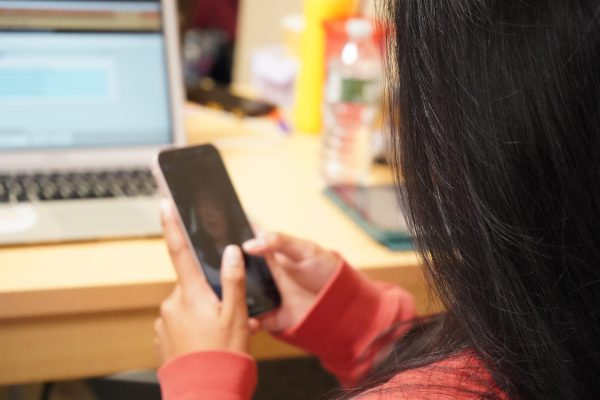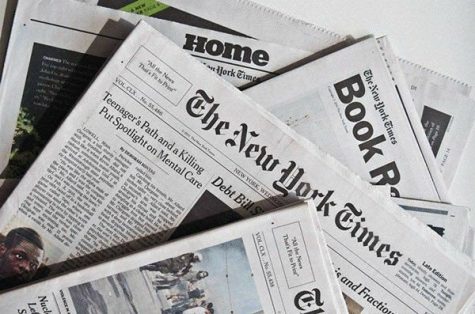Former Summit Students Make Claims About Abuse In Nyack School
“Abuse was rampant in the school. Physical, Sexual, emotional, and medical abuse happened. Kids would walk around in a drugged-up stupor.”
When Jason Samel attended The Summit School in Upper Nyack in the early 90s, he expected it to be a place of learning that fostered his social, mental, and academic development. At first glance, he was in awe of the charming mansion that rests on the Hudson River, but it was not until he attended the school that he realized that the beautiful scenic environment of the school was eclipsed by walls that were filled with what he refers to as dark secrets.
His time at this institution proved to be some of the most traumatic memories of his childhood that would continue to haunt him well into his adult life. These experiences would later inspire him to create a Facebook group called “The Summit School Exposed,” where victims of the school could gather virtually to tell their stories.
Samel, a former student, accused the Summit School of enabling several criminal behaviors, including child neglect, physical abuse, sexual assault, and verbal abuse, which he illustrated was ignored for many years by the law enforcement authorities in the school community.
“Abuse was rampant in the school. Physical, Sexual, emotional, and medical abuse happened. Kids would walk around in a drugged-up stupor. I was lucky enough never to be on drugs while I was there, but many other kids were even without their parents permission to put them on those drugs,” he claims.
Samel went on to further highlight that the counselors at the school were responsible for carrying out various abusive tactics on the students.
“(Many) counselors abused students in some way: abuse which ranged from a counselor yelling at students instead of helping them, physically restraining a student and sitting on their backs until they could not breathe for hours; placing students in chokeholds until they passed out; huge, six foot tall, 400-pound men lifting students over their shoulders and slamming them against the wall because they said something to them that they did not like.”
According to the ncbi.nlm.nih.gov website , research that gathered from a cross-sectional and descriptive study where 49.3 percent of the participants were female students and 50.7 percent of the participants were male students. The study concluded that students were exposed to at least one type of emotional violence from 59.4 percent of teachers, 52.8 percent of parents, and 61.8 percent of children at school. They were exposed to at least one type of physical violence, from 42.9 percent of teachers, 33.6 percent of parents, and 24.9 percent of children at school, while the rate of encountering the beating of another child was 53 percent. Regarding the exposure to at least one type of violence, males were found significantly more exposed to emotional and physical violence from male teachers, female teachers, and fathers, as well as additional physical violence from children at their school.
Samel admitted blocking out most of what happened to him for many years due to the devastating impact that it had on him psychologically. However, a particular incident stood out in his memory: the incident that occurred during his final moments at the academy. Samel states he was physically assaulted by a male supervisor during after-school detention.
“Another student in the detention called my girlfriend the N word. So, I got up out of my seat to confront this kid that was three times my size. Before I even got the chance to go up to him, I was hit over the head with a telephone by a supervisor of the school. I was knocked out, went into convulsions and there was blood all over my face when I woke up.”
When another supervisor and director of the school was made aware of the incident by Samel, who was 14 years old at the time, he responded with a flippant attitude towards young Samel.
“He asked me, ‘What do you want me to do? Do you want me to call the police? You might get in trouble for going after that kid. Do you want me to call your parents? You know they are not going to be so happy about this altercation. Or should I call the hospital and they can come pick you up then you can deal with your parents, the police and the hospital?’”
Samel explained that this pattern of neglect by the officials at the school was something that he had become accustomed to throughout his entire school life.
“All of the abuse at the school happened under the director’s eye. The abuse that I was subjected to combined with the reports filed by other students was sent to (him) so he was aware of the abuse. However, the abuse that I went through was still mild compared to what other students went through.”
An ambulance was called and Samel was taken to the hospital to treat his head wound. Samel’s parents withdrew him from the school. However, his abuser remained employed by the school for many years before he was fired for drug solicitation and child abuse.
It was when Samel’s repressed memories resurfaced that he began to remember that aside from physical abuse, he had also witnessed illicit drugs being distributed and used at the institution by the staff and students.
“Drugs were rampant, and the counselor smoked pot and did cocaine. Drugs were sold for some of the counselors by the students and to the students. There was a point where a staff member was fired for that same thing and everything was swept under a rug. It always has been.”
There are 5 million middle school students (30 percent) and 9.5 million high school students (60 percent) who reported attending schools where illegal substances were used, kept, and sold. These students were twice as likely to smoke, drink or use illicit substances as students who reported that their schools were substance-free according to the research highlighted by drugfree.org.
Additionally, the website illustrated that researchers who conducted this study found that substance use and addiction will add at least $41 billion (10 percent) to the costs of elementary and secondary education due to class disruption and violence: special-education, and tutoring, teacher turnover, truancy, children left behind, student assistance programs, property damage, injury, and counseling.
Each year, there were 13 million incidents of tobacco, alcohol, marijuana, ecstasy, or some other illicit substance taken by students whose age ranges from 12-to-17-year-old.
High school students like Megan Lane, a former student of Summit School, admitted to having unrestricted access to drugs while she attended the institution.
“They would let us walk down to the deli to purchase cigarettes knowing that we were underaged and while I was happy about that because it was my one vice. It was definitely inappropriate to let us smoke it while some of us were fourteen. It was just not right. So yes, they were fully aware of the drug use except for maybe, the cocaine.”
Lane further emphasized that students had an assortment of drugs to experiment with while they attended school.
“There was acid, triple C, ribotoxin, over the counter medication to get high and marijuana which I do not consider to be a drug but back then, it was considered a drug. There was also cocaine available at the school occasionally which people would go outside to use while it was dark.”
In addition to staff members allowing her to smoke, Lane said she was bullied by teachers who used nicknames when referring to her.
“The teachers would call me nicknames that would catch on. So, I was called Hollywood for an entire year. There was one staff member who said that I smelled and did not brush my hair enough. She also told me that I did not wash my “coochie.” Yes, I remember that.”
Lane went on to further explain that she was also constantly body-shamed by a member of the staff.
“My English teacher said that I was overweight and that I should wear clothes that fit me better. She suggested that I wear clothes that accentuate my body type rather than ones that make me look bigger and she said it in such a mean way. This was not a one-time thing that occurred. She repeatedly told me that. She even mentioned that she was going to call my parents and tell them to buy me new clothes because my clothes made me look like a ‘heffer.’ I didn’t even know what heffer meant at the time.”
She echoed Samel’s sentiments about the school over-medicating students. Lane was one of the many students placed on a variety of different medications.
“Their psychiatrist thought I was bipolar when I had ADHD. They misdiagnosed me with bipolar and placed me on a slew of antipsychotics and mood stabilizers. I became like a zombie and I could not stay awake. I went up from 120 to 200 pounds and they did that to a lot of people. They overmedicated students who were battling depression, schizophrenia or anything like that.”
In addition to reports of physical abuse, the accounts also included claims of sexual harassment. Samel recalls a time when a staff member made inappropriate comments about his genitals.
“He forcibly stripped me naked and forced me into an ice cold shower and he would not let me get out of the shower, he would tell me how much joy he was getting off of watching my penis shrink in the ice cold shower,” said Samel.
According to a national study conducted by the Civil Rights Data Collection (CRDC), For the years 2017- 18, there were approximately 786 new incidents of rape or attempted rape. The study states the number of incidents nearly doubled by 99 percent since the prior collection year. Furthermore, data conducted in 2011 by the American Association of University Women (AAUW) concluded that about 48 percent of 7th graders who took AAUW’s survey reported facing some form of sexual harassment during the 2010–11 school year. For 12th graders who took the survey, about 62 percent of girls and 39 percent of boys reported that they had experienced sexual harassment during the school year.
Lane also recounts suffering sexual harassment. “I was sexually harassed by a gym teacher. I was 17 at the time and he would compliment my breasts and he would try to flirt with me. He would ask me out to eat, he would also say when you are out of school maybe we should go out,” said Lane. “He never molested me or raped me but every day he would constantly say things that were highly inappropriate. He would say I wish I had a girl with (breasts) like yours.”
Another student, Rocky Martinez, remembers a staff member making inappropriate advances to students during the night time. “He would go into our room, take the flashlight and check to see if you were sleeping. That seems harmless, but I would feel him touching my blanket. We heard stories of the guy going into the female cottages and they felt that he was touching their breasts and checking to see if they were sleeping with clothes on.”
One physical education teacher who was in charge of the after-school activities would take students on different trips. Martinez says that often in these trips, the teacher would choose a young female student and separate himself from the rest of the students.
“It was all the time, there was a lot of flirting involved. It was odd, it was like he was grooming her for when she left Summit. There are credible sources who said that he and the young girl were dating during her time in the school around 2001-2002.”
According to the school’s website, the mission that Summit School promises is to give students a “balance between providing a supervised therapeutic milieu” and a caring atmosphere with “deep commitment to the betterment of the students in our care.” The school serves as a private residential school for children and teens with special needs as well as students who struggle with mental illness, from Middle School to High School students.
“Our learning environment is warm, friendly, and conducive to individual growth. Summit students enjoy coming to school because it is a place where they can develop a positive sense of accomplishment and self-worth,” said Richard Sitman in a mission statement posted to the school’s website, who was at one time the executive director.
Despite Sitman’s letter, accusers have identified the school as a toxic environment to learn and have reported the opposite of a safe and friendly environment.
“I remember a lot of verbal abuse, and them putting us down saying comments to us like
 you ain’t (expletive) and you are not going to matter, and also using threatening words saying I am going to put you in the quiet room and kick the (expletive) out of you,” said Martinez.
you ain’t (expletive) and you are not going to matter, and also using threatening words saying I am going to put you in the quiet room and kick the (expletive) out of you,” said Martinez.
Several students have made allegations about Summit having a “quiet room,” a punishment room where they would take students who showed unsatisfactory behavior or any signs of resistance.
“This was around 1998, they would drag you to the quiet room and they would rip off your shirt and take your pants off and keep you in your underwear to embarrass you. They did that to a lot of kids,” said Martinez.
 Samel described the quiet room as a small confined room where they would place the students for even the smallest wrongdoing, he says students were placed in this room for hours without being allowed to use the bathroom.
Samel described the quiet room as a small confined room where they would place the students for even the smallest wrongdoing, he says students were placed in this room for hours without being allowed to use the bathroom.
In the past, the Summit School has been the highlight in multiple incidents: including the death of a 15-year old in 2014. Her death was ruled as suicide by asphyxiation, and her body was found in her room the morning after. Another incident occurred in 2002 when a student was shoved out of a second-floor window by another student.
The most recent incident occurred in 2018 when a former student was arrested for threatening Summit School. According to the article published by Patch, the man recognized as Robert Csak left six threatening voicemails directed to a staff member. In the article, the staff member states the voice messages were “accidentally erased.”
 “I can’t say I have not seen any abuse. Yes, they did have a time-out room. Kids act out, they are kids and some kids do not listen to any of the staff members. So the staff take it upon themselves to usually punish, not abuse, but punish,” said Donna DeGraw, a former student who attended Summit school from 1996 to 2001.
“I can’t say I have not seen any abuse. Yes, they did have a time-out room. Kids act out, they are kids and some kids do not listen to any of the staff members. So the staff take it upon themselves to usually punish, not abuse, but punish,” said Donna DeGraw, a former student who attended Summit school from 1996 to 2001.
DeGraw says most of Summit’s former students she knows are against shutting down the school; further, she reports that they are now living successful lives despite the Facebook group’s claims of trauma.
“Some of the students say they were abused, but they don’t own up to what they have done. There are three sides to a story. Let’s say a girl can go AWOL, and she gets five days of punishment, five days of the cottage. The girl is not going to sit there and say okay, I did wrong. So they’ll go against that and makeup things saying they were abused. Students claim that Summit is going to close down but I highly doubt it.”
DeGraw criticized some of the drastic measures former students have done for justice, saying the claims against Summit are often exaggerated.
“Don’t forget Summit is a school for troubled teens. They go based on a point system, and if you get ten points a day, you can hang out and do whatever you like. When you’re down to less than four, you get five days of cottage and the teachers and the staff member wouldn’t just sit there and abuse you for no reason. Every six months the staff have training, all teachers and staff members get trained. So if a girl gets caught smoking pot and she doesn’t like the outcome of the punishment she’ll say ‘oh well, this guy abused me.’ It’s a lot of he said, she said stuff,” said DeGraw.
According to Summit School’s website in 2003, they launched a campaign called “Campaign for Kids,” with the support from parents, the funds raised from the campaign were used for the renovations in the school’s building; adding a 4,000-square-foot Upper School addition. According to Summit, the building is intended to assist families who they help guide and counsel, as well as students they assist with an “integrated therapeutic learning approach.”
“Summit helped a lot of people, some took the help and some didn’t want it. There have been suicides and killings, there were a lot of people who passed away that we know of, it’s sad but it wasn’t Summit’s fault,” said DeGraw. “There were staff members that didn’t care and staff members that did care. My mom passed away while I was there and believe it or not. the Summit staff members were all there to help me get through it.”
The Summit School Exposed group on Facebook has gathered more than 500 followers, with multiple victims sharing their heartbreaking testimonies of some form of abuse they faced during their time at Summit School. Their stories often shared with explicit details have neither been denied nor confirmed by any of the Summit School’s officials. The Impact staff attempted several interview requests and reached out to directors of both the Summit Schools in Nyack and Queens; neither of the school’s directors responded to these requests. A message from representation stated the Summit School respectfully declines all interviews about the topic, and that is aware of the Facebook message board and the allegations. “It is filled with statements that are sensational, defamatory, and absurd,” said the representation, and that “Summit is proud of its record, its staff, its families, and the work that it does.”

Nicole Alarcon is a senior at Mercy College, majoring in journalism. Born in São Paulo, Brazil, she moved to the United States at 10-years-old.
Nicole...

Renae is a Jamaican student at Mercy College that is currently in her senior year of studies. She enjoys writing poetry, sleeping, watching King of Queens,...








